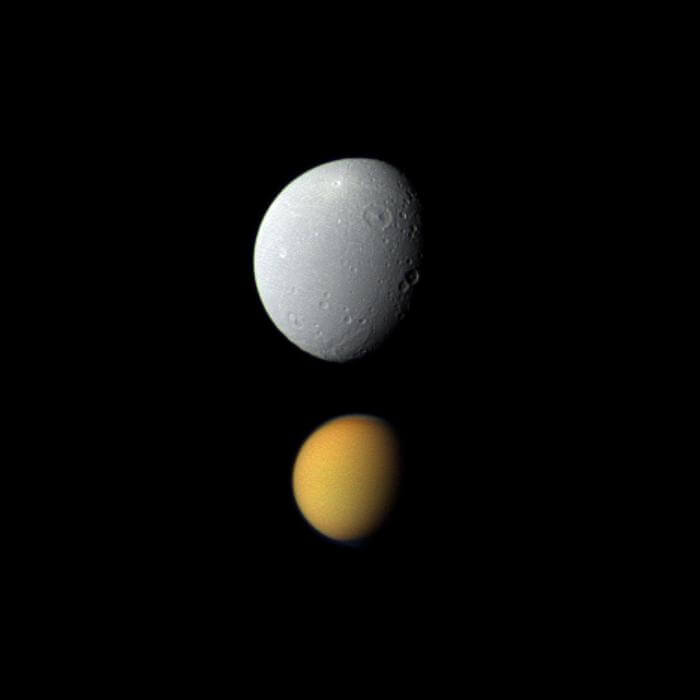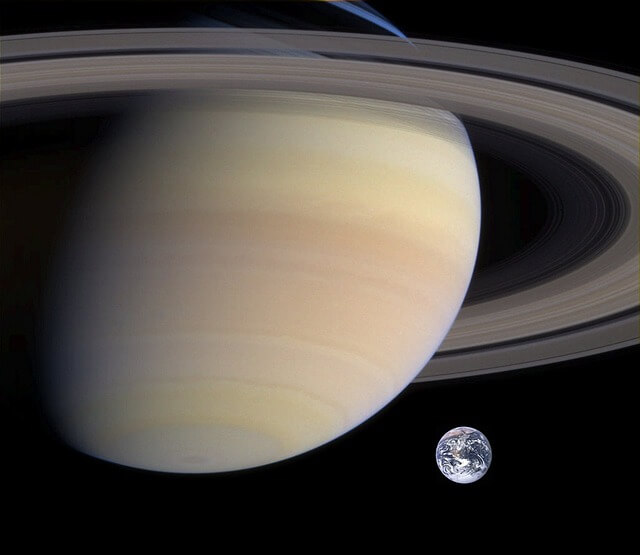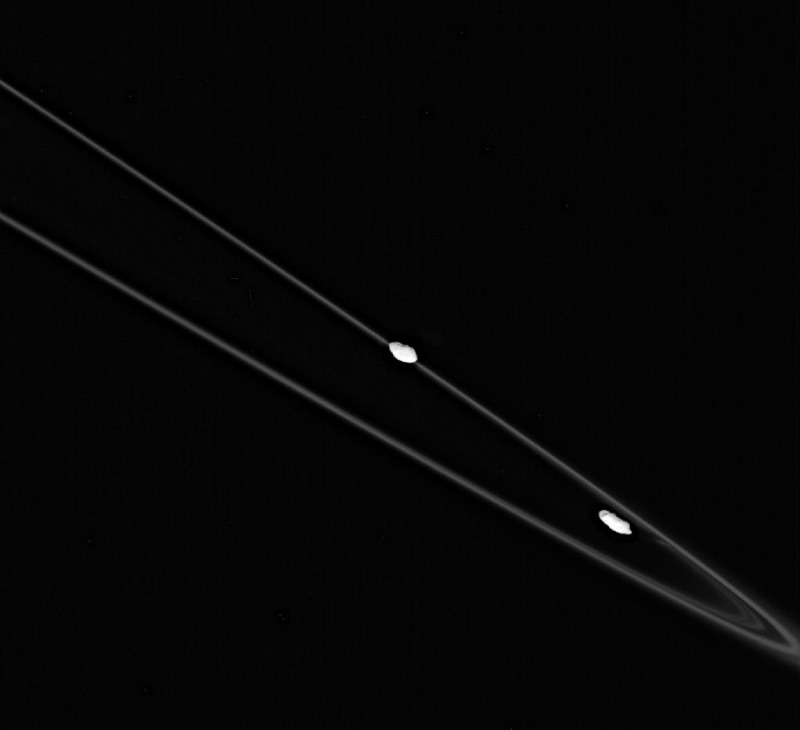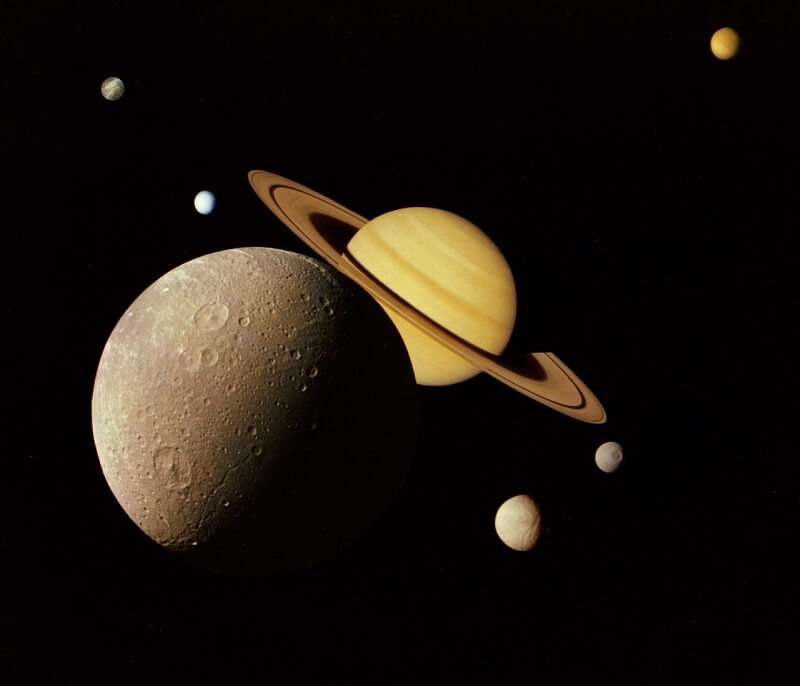The planets in our solar system are very diverse, from Earth’s habitable surface to the icy landscape of Neptune. One factor that contributes to their diversity is the moons that orbit them. Among the planets, there are some with no moons and one with over 100 known moons. With 290 traditional moons found in our solar system, it would make sense that they would be evenly distributed, but that is not the case.
The majority of these moons belong to just two planets. In recent years, they have shared the reign. As new discoveries continue to be made, the count continues to climb as they battle for the title of most moons, so which planet has the most moons and why?
The Planet Breaking Records with Its Remarkable Moon Count
For years, Saturn and Jupiter have been taking turns having the highest number of moons. In 2023, Saturn beat the larger planet Jupiter’s moon count claiming the record for the planet with the most moons. While Jupiter has an impressive 95 moons, more and more are tallying up for Saturn. Current observations have revealed a staggering 146 moons orbiting the ringed planet, allowing Saturn to stand undisputedly as the planet with the most moons.

The first moon ever observed orbiting Saturn was Mimas, discovered in 1789 by William Herschel. This notable discovery was only the beginning. As scientists have studied the planet’s natural satellites, they have revealed there is an immense amount of diversity among them. They include irregularly-shaped smaller moons to moons with an ice surface or even a moon bigger than a planet. The most well-known and largest of Saturn’s moons, Titan, has surface lakes and rivers of ethane and liquid methane. Saturn’s range of moon characteristics continues to intrigue scientists, with NASA planning their Dragonfly mission in 2027 to study Titan.
Why Some Planets Have More Moons Than Others & How Saturn Has So Many
To understand why some planets have more moons than others, it’s important to know what counts as a moon. A moon is classified as an object which orbits another larger object in an elliptical path. They have a regular and predictable trajectory relating to the celestial object they orbit. They are held in place by gravitational forces. Moons can orbit planets, dwarf planets, and even some large asteroids can have moons.
Some planets have very few moons, like Earth’s single moon, or no moons, like Venus and Mercury. These planets with fewer moons are smaller in size or in closer proximity to larger objects like the sun. They don’t have enough gravity to catch any moons, and their gravity wasn’t strong enough to form or hold moons.

In contrast, Saturn’s extensive collection of moons can primarily be attributed to its significant gravitational pull. Saturn’s massive size means it has a very large mass. Since mass is related to gravity, its gravitational influence is also immense. Saturn’s gravitational field extends quite far into space.
When objects such as comets and asteroids traveling enter this field, they are subject to Saturn’s gravitational pull. The object’s path becomes altered, and they frequently become trapped in orbit around Saturn. Overwhelmed by the force of its gravity, the objects end up in a constant orbit, becoming moons. The remarkable capability to collect naturally occurring satellites allows Saturn to continually increase its moon population.
Also contributing to such a high moon count is accretion and early formation theories. Scientists hypothesize that during Saturn’s initial formation, a disk surrounded the planet made of excessive material. In this disk, a process called accretion occurred, and the contents of the disk slowly merged. Through this process, countless young moons were formed, which continued to collide and interact with each other. Some eventually became fully formed moons, while others broke and may have continued this cycle.
Saturn’s Rings & Their Role in Moon Formation
Saturn’s iconic rings play a significant role in the formation of moons around the planet. Saturn’s rings are composed of a variety of materials, with particles of dust, rocks, and ice all orbiting the planet. Over time and under the influence of gravity, these particles within the rings can merge. Through accretion, moonlets or small moons in their early stages are formed.
As these moonlets grow in size and, therefore, mass, they continue to attract additional ring material to themselves. This is only possible thanks to the mutual gravitational attraction. As time goes on, the moonlets solidify and become proper moons created from the ring’s materials. The diverse range of material in Saturn’s ring system results in moons formed from it ranging in substance and size. Scientists have used the moon formation from Saturn’s rings further to understand the formation of planets in our solar system.
Saturn’s Shepherd Moons
There are some remarkable moons within Saturn’s rings. Small moons, fittingly called shepherding moons, are not only unique but crucial to the rings. These moons support the definition and structure of Saturn’s rings. A phenomenon called orbital resonance allows these moons to do so through gravitational interactions.

This orbital resonance is the reason the rings keep their structure. It’s the shepherd moons that shape them into the rings that we all know. The orbital periods, or how long it takes the moons to complete an orbit around Saturn, synchronize with the content of the rings’ orbital periods. The synchronized orbits create supported regions where the moon’s gravitational influence reinforces the orbits of the particles.
The interaction from the shepherd moons forms stable zones of particles, gaps separating the rings, and defined edges. Without these shepherd moons, Saturn’s rings would eventually disperse and lose all of their definition.
Final Thoughts: Saturn’s Impressive Collection of Moons
Saturn’s incredible collection of moons allows it to reign over all of the other planets. The natural satellites in its orbit, counting 146, means it surpasses Jupiter’s 95 moons. Even though Jupiter has a larger mass, Saturn’s unique circumstances have caused its moon count to reign supreme. The theory of accretion, the presence of a disk in the planet’s early stages, the planet’s respectable size, and its rings have all contributed. These factors have all created the perfect moon-collecting situation for Saturn, showcasing the uniqueness of the planet.
It is important to note that as science evolves, the number of known moons could change. As discoveries and observations continue within our universe, more moons will be discovered. The possibility means moons around Saturn and even some other planets are almost guaranteed future findings. If you once again ask which planet has the most moons, the answer could very well have changed.

